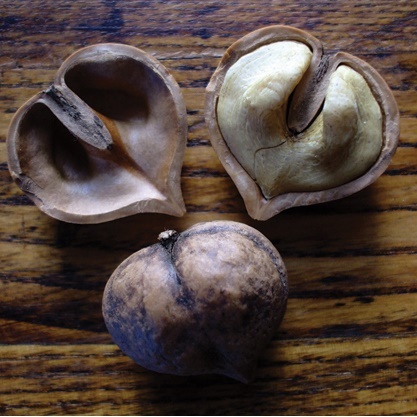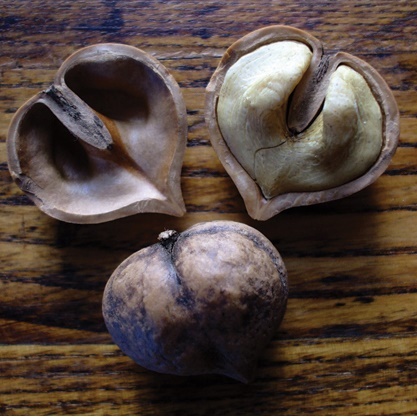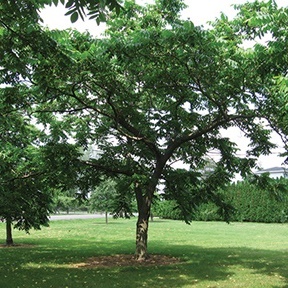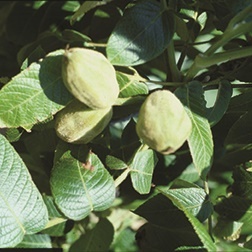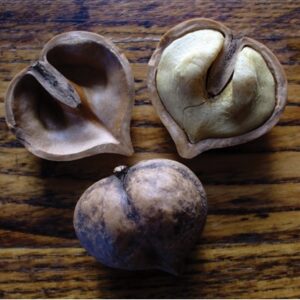Nut : BLACK WALNUT 45-60cm (18-24") On Own Root
$24.95
(Juglans nigra)
This majestic and valuable timber thrives in deep, well drained fertile soil. In fact, when the first Mennonite settlers came to Ontario in the early 1800s, it is said that they watched for walnut trees as a reliable indicator of where the best land could be cleared for farming. Nowadays walnut is probably the most widely used tree in alley-cropping systems in North America providing shade, nuts, firewood and eventually timber. Black walnut is valued for its high quality wood used in fine furniture, gun stocks and cabinet making. The nuts will add their distinctive flavour to ice cream and desserts, or can be used in baking. Even the crushed nut shells have a multitude of uses with some large nut processing plants finding it difficult to satisfy the demand. Mature height 20-30m (65-100').
PLANT 2 FOR POLLINATION | ZONE 3/4 | HARVEST: SEPT.-OCT.
Rootstocks
G41 Dwarf
G935 Small Semi-Dwarf
G969 Small Semi-Dwarf
G30 Semi-Dwarf
G890 Semi-Dwarf
Pollenator definitions
NEEDS A POLLENIZER ̶ means another tree of the same type or kind but a different variety must be blooming nearby at the same time.
EXAMPLE A Liberty apple and a Wealthy apple can cross-pollinate. Two trees of the same variety ie: ̶ 2 Wealthy apples, cannot cross pollinate because they are genetically identical.
Other trees are marked as SEMI-FERTILE. These will set fruit without a second tree. However they will often bear more, and sometimes larger fruit if another variety of the same kind of tree is nearby.
You can select 2 different trees of the same kind marked as NEEDS A POLLENIZER or plant one of those along with one SELF-FERTILE or one SEMI-FERTILE. Also consider ripening times ̶ a Goldrush apple might not start blooming before a Pristine is finished.



